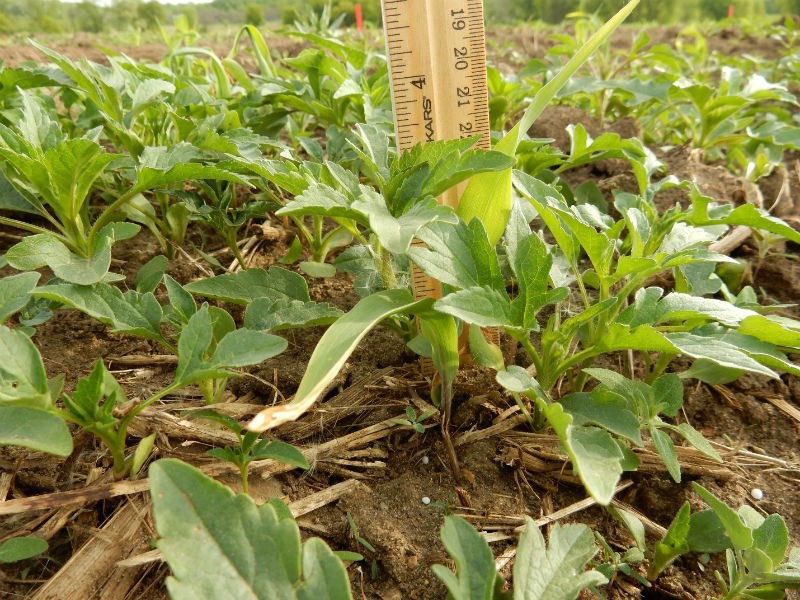By Lisa Behnken, Fritz Breitenbach, Jeff Gunsolus, Phyllis Bongard
The recent frost across southeast Minnesota may have slowed down corn and soybean development, but it did not slow down the rate of weed growth. There are plenty of 1- 4-inch-tall giant ragweed and 1- to 2-inch-tall common lambsquarters in corn and soybean fields. Waterhemp is also beginning to emerge (0.25-0.75 inch).
The current dilemma that needs to be addressed is most evident in fields where a pre-emergence herbicide was not used or it provided poor giant ragweed control. In addition, our recent 1- to 2-inch rainfall may limit the ability to get into the field in a timely manner to control the weeds when they are most susceptible to control and before they reduce crop yield potential.
Early crop planting favors giant ragweed, one of the first weeds to emerge after the crop is planted. Common lambsquarters is also an early-emerging weed and as soils warm, waterhemp begins to emerge in mid to late May.
Currently, giant ragweed is moving into the exponential growth stage and will pass the ideal 2- to 4-inch weed height for good control very soon. Once past this ideal size it becomes more challenging to control, especially if the biotype is herbicide resistant. In corn, there are several good options for post-emergence control, but application needs to occur soon.
Unfortunately, the wet fields may give an advantage to the giant ragweed. In soybeans, be vigilant. There are not as many options for post-emergence control of giant ragweed, plus it may become difficult to hit the optimum herbicide timing for ideal control. This is especially true if you have herbicide-resistant giant ragweed.
Controlling Resistant Ragweed in Soybean
If you are dealing with glyphosate-resistant giant ragweed in RoundupReady soybean, those seedlings need to be targeted at 2-3 inches with a SOA-2 or SOA-14 herbicide. Examples include FirstRate (SOA-2), Flexstar GT or Cobra (SOA-14). However, if the giant ragweed is also SOA-2 resistant, FirstRate will not work and SOA-14 herbicides become the best option. See PRE and POST Herbicide Diversification Options for Glyphosate-Resistant Corn and Soybean for additional information.
If you planted LibertyLink soybeans, and there wasn’t an opportunity to get a pre-emergence herbicide on, the first glufosinate (Liberty) application should be targeted when the ragweed is small. Include a residual, such as Reflex or Flexstar (NOT FlexstarGT) with the glufosinate to help control the last flushes of giant ragweed and other weeds, such as waterhemp, that will become troublesome as the season progresses. Note that adding a Group 15 herbicide such as Dual II Magnum, will assist with later season waterhemp control.
Additional Resources
See results from the 2015 herbicide trial near Rochester on SOA-2 and SOA-9 resistant giant ragweed for more details, Glufosinate (LibertyLink) and glyphosate (Roundup Ready/GT) weed control programs for SOA-2 & SOA-9 resistant giant ragweed in soybean.
Also, see the Crop News article, Herbicide resistant giant ragweed control: Alternative herbicide options are limited and the video series, Herbicide resistant giant ragweed, on the U of M Crops YouTube channel: https://www.youtube.com/user/UMNCrops.
Additional information is available on the University of Minnesota Extension Weeds website: http://z.umn.edu/weeds.






